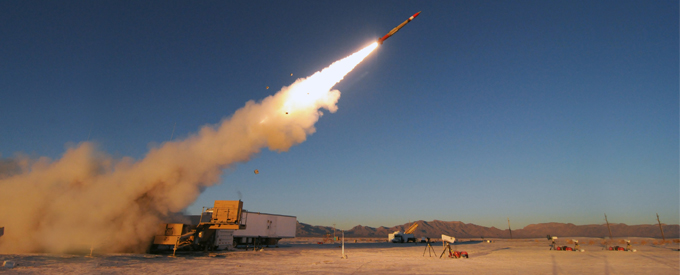2020-06-07
PAC-3 MSE: Defeating Global Threats
Lockheed Martin recently received a US$6.07 billion contract from the U.S. Army for the production of Patriot Advanced Capability-3 (PAC-3) Missile Segment Enhancement (MSE) interceptors and associated equipment. This will be delivered across FY21, FY22 and FY23 contract years.
The contract entails the production and delivery of PAC-3 MSE interceptors, launcher modification kits, associated equipment and non-recurring efforts to support the United States and global customers.
"This contract demonstrates our customer's continued confidence in our ability to deliver unmatched Hit-to-Kill technology that defeats the ever-expanding global threats of today and tomorrow," said Scott Arnold, vice president, Integrated Air & Missile Defense at Lockheed Martin Missiles and Fire Control. "PAC-3 MSE is one of the most capable multi-mission interceptors, enabling our customers to defend against advanced tactical ballistic missiles, cruise missiles and aircraft."
To meet customer demand and increase production capacity, Lockheed Martin is currently building an 85,000-square-foot expansion at the Camden, Arkansas, U.S., facility where PAC-3 MSE interceptors are assembled. The building is expected to be complete by fourth quarter 2021, with operations beginning in first quarter 2022.
Nations such as the U.S., Japan, Romania, Poland, UAE, Sweden, South Korea, Bahrain and Germany, have signed agreements to procure PAC-3 MSE interceptors.
High Velocity Missile
The PAC-3 MSE is a high velocity, hit-to-kill, surface-to-air missile. It is an evolution of the battle-proven PAC-3 Cost Reduction Initiative (CRI) Missile. The missile defeats incoming targets by direct, body-to-body impact. The PAC-3 Missile uses a solid propellant rocket motor, aerodynamic controls, attitude control motors (ACMs) and inertial guidance to navigate.
The missile flies to an intercept point specified prior to launch by its ground-based fire solution computer, which is embedded in the engagement control station. Target trajectory data can be updated during missile flyout by means of a radio frequency uplink/downlink. Shortly before arrival at the intercept point, the PAC-3 Missile’s on-board Ka band seeker acquires the target, selects the optimal aim point and terminal guidance is initiated. The ACMs, which are small, short duration solid propellant rocket motors located in the missile forebody, fire explosively to refine the missile’s course to assure body-to-body impact.
Engaging Evolving Threats
The PAC-3 MSE employs kinetic energy to destroy targets through a hit-to-kill capability and provides the range, accuracy, and lethality to effectively defend against TBMs armed with weapons of mass destruction as well as providing expanded battlespace performance against complex threats.
The PAC-3 MSE expands the lethal battlespace with a two-pulse solid rocket motor to increase performance in altitude and range and effectively counter evolving threat advancements. The enhancements ensure the PAC-3 Missile Segment of the Patriot Air Defense System is capable of engaging new and evolving threats.
The PAC-3 MSE design utilises the latest technology to significantly increase performance. It incorporates a larger, dual pulse solid rocket motor; larger fins; and upgraded actuators and thermal batteries to accommodate increased performance. The modifications extend the missile’s reach.
The PAC-3 MSE is packaged in a single canister that stacks to provide logistical flexibility. Twelve individual PAC-3 MSE Missiles can be loaded on a Patriot Launcher or a combination of six MSEs and eight PAC-3 Missiles (two four packs) can be loaded. As the U.S. Army increases its inventory, there will reportedly be continued demand for PAC-3 MSE. More than 60 PAC-3 CRI and MSE missiles have successfully intercepted targets in flight testing.
Reference Text/Photo:


No Comments